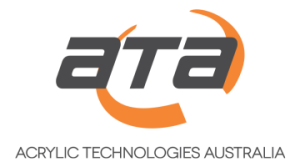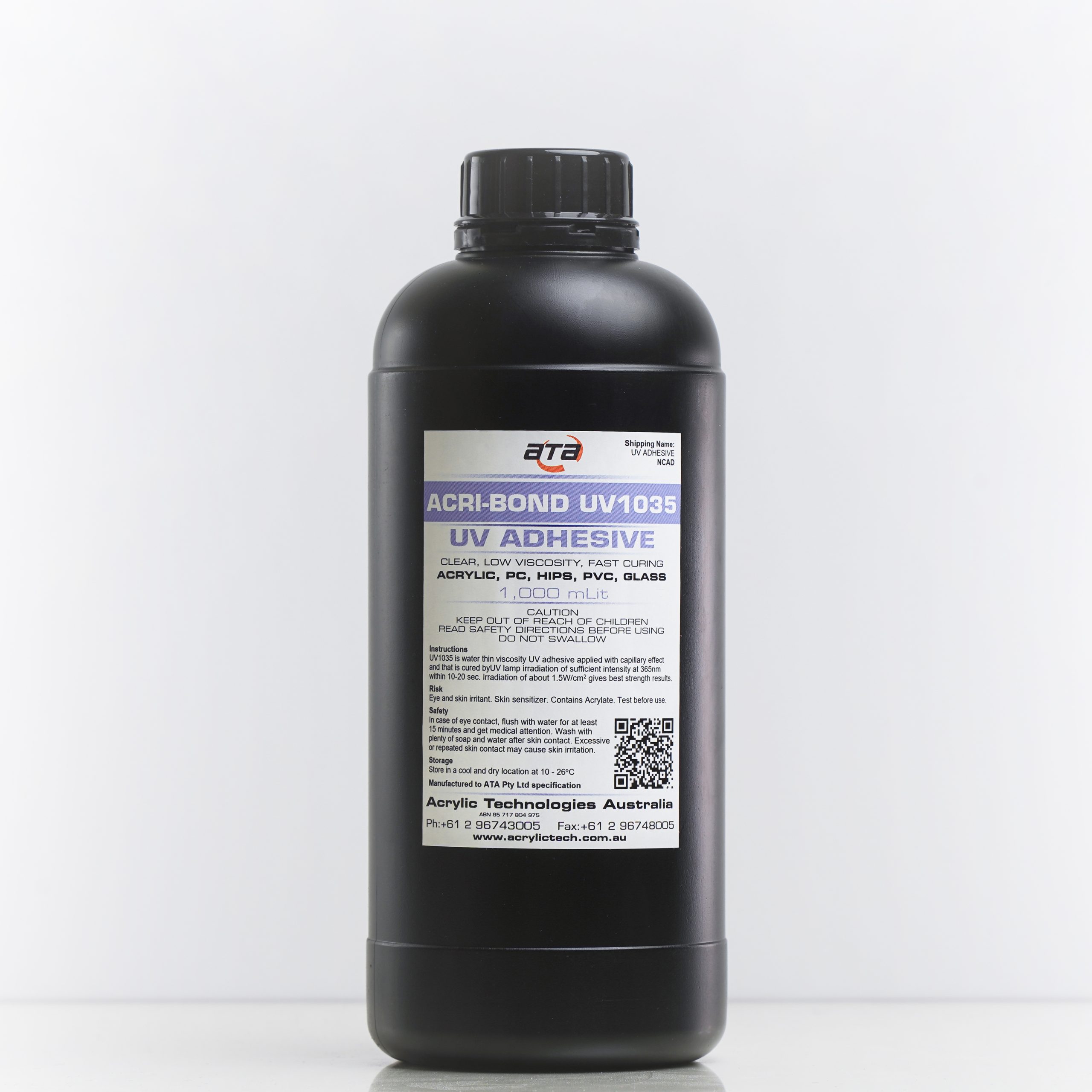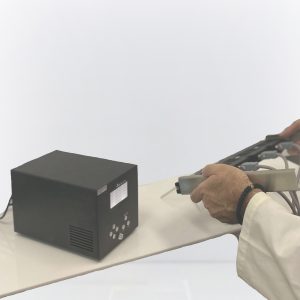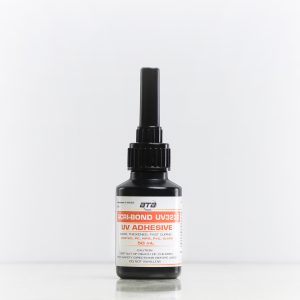Description
Acri-Bond UV1035 is a UV Light Curing Adhesive Low Viscosity 25±5 (CPS@25℃). The photo-curing adhesive is designed for the bonding of ABS, HIPS, PS, PC, PVC and Acrylics. UV Glue Adhesion has been shown to be stronger than the original materials that it is bonding to. It is really easy to get perfect bubble free joints with UV Glue!
The benefits of UV Adhesives is that you are able to position the joint exactly how you want and have it perfect before setting the UV Adhesive off. You are able to remove bubbles by tapping the joint or using a vibrating gun. There should not be any bubbles in the glue unless it has been recently shaken. If you made a mistake you can simply wipe the glue away and start over. We will have some clear tapes on the market soon to help with perfecting your UV Gluing.
Choosing Between UV Glue Viscosities
- Acri-Bond UV1035 – Low Viscosity (water thin) 25±5 (CPS@25℃). Used for joints that require a capillary effect but do not require any gap filling.
- Acri-Bond UV2046 – Medium Viscosity (Syrupy like Acri-Bond 125) 60±10 (CPS@25℃). It can be used for capillary effect if when you cut the acrylic miter you cut at 44°-44.5° to allow the glue to flow into the joint. It can also be used by applying and pressing the two surfaces together and used for mild gap filling.
- Acri-Bond UV3232 – High Viscosity (Similar Viscosity to Honey) 900±100 (CPS@25℃). Can be used for face to face joining, using to ‘tack’ a joint, also be applied on the joint then pressed together. Has good gap filling capacity and hardly runs due to the viscosity.
For a visual comparison check our YouTube Videos to compare.
Suitable UV Torch
Our UV Glues and many other brands of UV Glues require a 365nm Frequency to cure the UV Glue. If this frequency is not focused on 365nm it will only skin the top few layers of the glue, making it seem like it is set but in reality it has not been fully cured and will likely fall apart when put under tension.
The difference lies in the LEDs Japanese and some Korean Made LEDs are focused to be at 365nm and are 1% at most away from 365nm. Which is approximately a +- 4nm range. The average peak of the frequency is at 365nm. This is a reliable torch as you know for certain the frequency is always at 365nm.
Whereas the cheap alternatives use cheap Chinese LEDs which have a stated frequency of 365nm but are on a wider spectrum of light. Which are approximately 28% away from the stated amount. The peaks are generally around 395nm-425nm. These LEDs are unreliable and will not properly cure most UV Glues on the market.
We have two options available on the market. A UV Rechargeable Torch Kit for one smaller jobs. UV Curing System for larger and more frequent jobs. Both of these UV Lights are 365nm spec perfect for our UV Glues and other types UV Adhesives on the market too.
Physical Properties
| Item | Specification | Test Method |
|---|---|---|
| Composition | Acrylic resin | Be judged by the composition |
| Chemical Class | Liquid @ 25°C | Eye inspection |
| Appearance | Yellowish Liquid | Eye inspection |
| Viscosity, cps | 20~30 25°C (S21, 100 rpm) | Brookfield RVDV-I+ |
| Specific Gravity | 1.0235 @25°C, RH 60% | Specific Gravity Cup |
| Refractive Index nD | 1.4769 @25°C, RH 60% | ATAGO Abbe Refractometer NAR-1T |
| Colour Gardner Scale | 1~2 | Gardner Colour Comparator |
| Solvent Content, % | 0 | |
| Heavy Metal Content | 0 | SGS Certificate |
Characteristics of ACRI-BOND UV1035
- Toughness, shock resistance and thermal shock resistance.
- Excellent surface dryness and transparency after curing.
- Exhibits high adhesion strength.
- Suited for bonding to many plastics.
What to check when using UV Adhesives
- The right frequency UV Torch – If a quality 365nm UV Light isn’t used you will likely not fully cure the UV Adhesive. You may only cure the skin or slightly cure it. This will result in a failure of the joint.
- UV Adhesive is not water proof – Continuous exposure to water ie – aquarium or outdoor signage will cause the bond to break up overtime. We always recommend using another glue like Acri-Bond 290, Acrifix 192 or Acri-Bond 204 to seal the joint after you have used the UV Glue if it is going to be outside or used for holding water.
- That the UV Light actually penetrates through one side of the plastic – The best way to check this is by putting a white piece of paper on a table and holding the plastic that you are going to use over it. If a similar amount of UV light passes through the plastic as it does with no plastic there you are okay to proceed. If only a small beam or no beam passes through you cannot use that type of plastic. This is due to either the plastic being opaque and not allowing any light through or if clear or tinted there are UV Inhibitors and Blockers that do not allow light to pass through. You will have to source another brand of plastic.
Cure Schedule
It is a solvent free material that cures in seconds when exposed to 365nm UV light with the accumulated energy of 1,000-2,000mJ/cm2 of hardening under condition with:
| Temporary curing time sec | 5 ~ 10 |
| Recommended curing time sec | 10~ 15 |
Storage and Shelf Life
ACRI-BOND UV1035 should be kept without any possibility of light exposure. Put lid back on immediately after use. ACRI-BOND UV1035 has an 18 month minimum shelf life when stored in a dark place below 25°C in original, unopened containers. Check the label for manufacture date.
Caution
Some findings indicate a lack of potential for carcinogenicity with the compositions of ACRI-BOND UV1035 by long term recurrent application to the skin. However, contact with skin is likely to produce mild transient reddening. It is important to remove adhesive from skin with soap and water thoroughly. ACRI-BOND UV1035 is of moderate acute toxicity by swallowing. If swallowed, induce vomiting at once and call a physician. Avoid contact with eyes. In case of contact, flush with water for at least 15 minutes and get medical attention immediately. For specific information on this product, consult the Material Safety Data Sheets.








